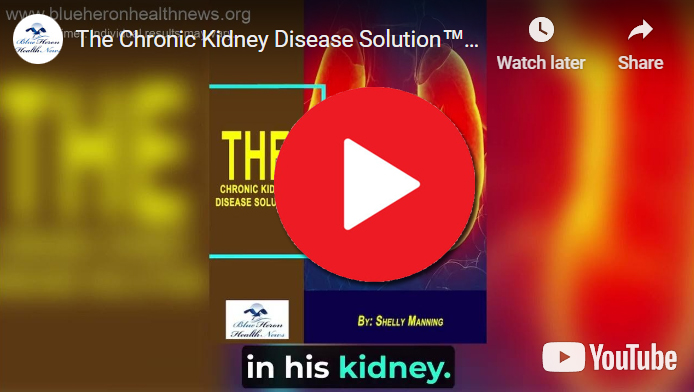
The Chronic Kidney Disease Solution™ by Shelly Manning It is an eBook that includes the most popular methods to care and manage kidney diseases by following the information provided in it. This easily readable eBook covers up various important topics like what is chronic kidney disease, how it is caused, how it can be diagnosed, tissue damages caused by chronic inflammation, how your condition is affected by gut biome, choices for powerful lifestyle and chronic kidney disease with natural tools etc.
What are the different types of dialysis?
Dialysis is a life-saving treatment for patients with end-stage renal disease (ESRD) and severe chronic kidney disease (CKD). There are two primary types of dialysis: Hemodialysis (HD) and Peritoneal Dialysis (PD). Each type has different methods, protocols, and settings to suit individual patient needs and lifestyles. Here is a detailed look at the different types of dialysis:
1. Hemodialysis (HD)
Hemodialysis involves filtering the patient’s blood through a machine to remove waste products, excess fluids, and electrolytes. This process occurs outside the body and uses an artificial kidney, or dialyzer.
1.1 In-Center Hemodialysis:
- Procedure: Patients visit a dialysis center, usually three times a week, with each session lasting about 3-5 hours. Blood is drawn from the body, passed through the dialyzer, and then returned to the body.
- Supervision: Hemodialysis is performed under the supervision of healthcare professionals who monitor the patient’s vitals and the dialysis process.
- Access: Requires vascular access, typically an arteriovenous (AV) fistula, AV graft, or a central venous catheter.
1.2 Home Hemodialysis:
- Procedure: Similar to in-center hemodialysis but performed at the patient’s home. Training is required for the patient and their caregiver to manage the equipment and treatment protocols.
- Frequency: Can be performed more frequently than in-center hemodialysis, often five to seven times per week, with shorter sessions.
- Flexibility: Offers more flexibility and convenience, allowing patients to fit dialysis into their daily schedules.
1.3 Nocturnal Hemodialysis:
- Procedure: Conducted either at home or in a dialysis center while the patient sleeps. The sessions are longer, usually lasting 6-8 hours.
- Benefits: More gentle and thorough removal of waste products and fluids, potentially leading to better patient outcomes and quality of life.
2. Peritoneal Dialysis (PD)
Peritoneal dialysis uses the lining of the patient’s abdominal cavity, the peritoneum, as a natural filter to remove waste products and excess fluids from the blood.
2.1 Continuous Ambulatory Peritoneal Dialysis (CAPD):
- Procedure: The patient manually performs exchanges (dialysate solution exchanges) four to six times a day. Each exchange involves draining the used solution and replacing it with fresh dialysate.
- Independence: Allows patients to perform dialysis independently, without machines, and can be done in various locations.
- Frequency: Exchanges typically take about 30-40 minutes and are performed during waking hours.
2.2 Automated Peritoneal Dialysis (APD):
- Procedure: A machine, called a cycler, automatically performs exchanges during the night while the patient sleeps. The machine controls the timing, drainage, and infusion of the dialysate.
- Convenience: Reduces the need for manual exchanges during the day, offering more freedom and flexibility.
- Flexibility: Can be tailored to individual needs with various cycling schedules and dwell times.
Access Types for Dialysis
1. Arteriovenous (AV) Fistula:
- Creation: Surgically created connection between an artery and a vein, usually in the arm.
- Benefits: Provides a durable and reliable access point with a lower risk of infection and clotting compared to other access types.
- Maturation: Requires time (weeks to months) to mature before it can be used for dialysis.
2. Arteriovenous (AV) Graft:
- Creation: Uses a synthetic tube to connect an artery and a vein, providing an alternative when veins are not suitable for a fistula.
- Benefits: Can be used sooner than a fistula, typically within 2-3 weeks.
- Risks: Higher risk of infection and clotting compared to a fistula.
3. Central Venous Catheter:
- Placement: Inserted into a large vein in the neck, chest, or groin.
- Use: Generally used for short-term or emergency dialysis access.
- Risks: Higher risk of infection and clotting; not recommended for long-term use.
4. Peritoneal Dialysis Catheter:
- Placement: Surgically placed into the abdominal cavity for peritoneal dialysis.
- Use: Allows for the infusion and drainage of dialysate solution.
Choosing the Right Type of Dialysis
The choice between hemodialysis and peritoneal dialysis depends on various factors, including:
- Patient Preference: Lifestyle, work, and family responsibilities.
- Medical Condition: Overall health, the presence of other medical conditions, and the condition of blood vessels.
- Home Environment: The ability to perform home dialysis safely and the availability of a caregiver if needed.
- Access to Care: Proximity to a dialysis center and availability of training for home dialysis.
Conclusion
Dialysis is a critical treatment for patients with end-stage renal disease, with two main types: hemodialysis and peritoneal dialysis. Each type offers different methods and settings, allowing for flexibility to suit individual patient needs and lifestyles. The choice of dialysis type, frequency, and setting should be made collaboratively between the patient and their healthcare team to ensure the best possible outcomes and quality of life. If you or someone you know is considering dialysis, it is important to discuss all options with a nephrologist to determine the most appropriate and effective treatment plan.
The Chronic Kidney Disease Solution™ by Shelly Manning It is an eBook that includes the most popular methods to care and manage kidney diseases by following the information provided in it. This easily readable eBook covers up various important topics like what is chronic kidney disease, how it is caused, how it can be diagnosed, tissue damages caused by chronic inflammation, how your condition is affected by gut biome, choices for powerful lifestyle and chronic kidney disease with natural tools etc.
